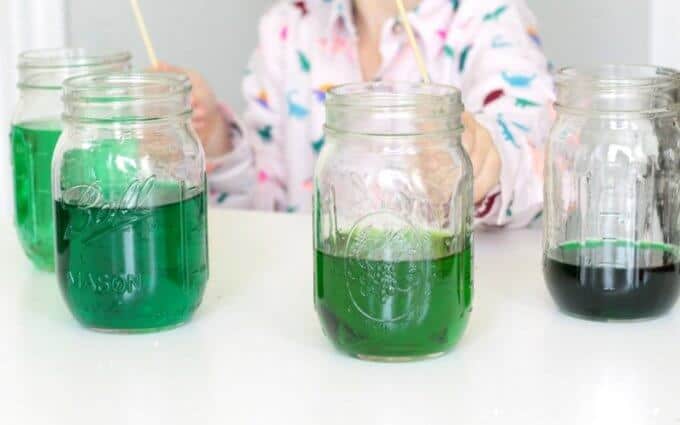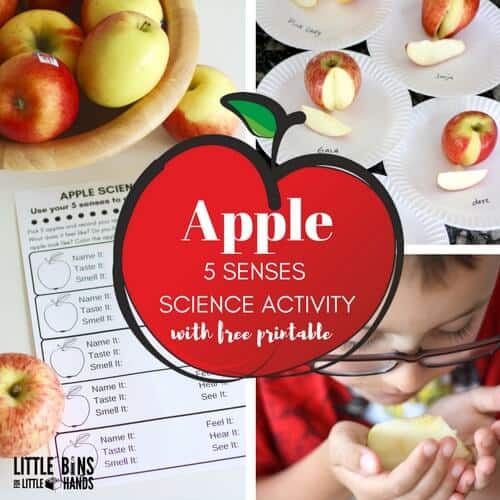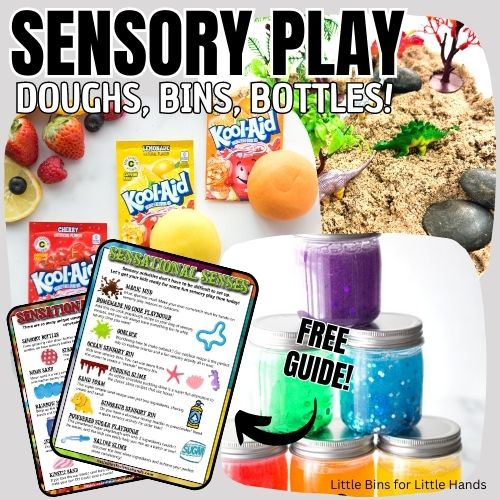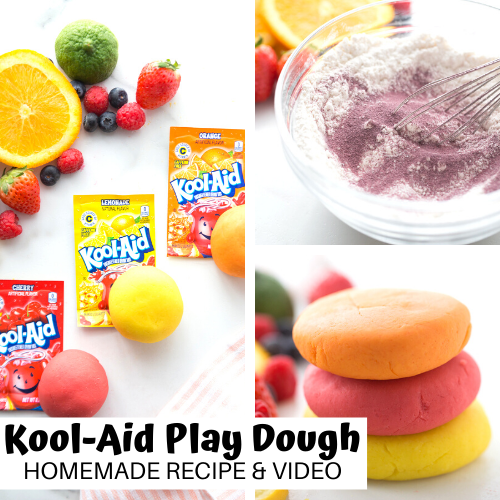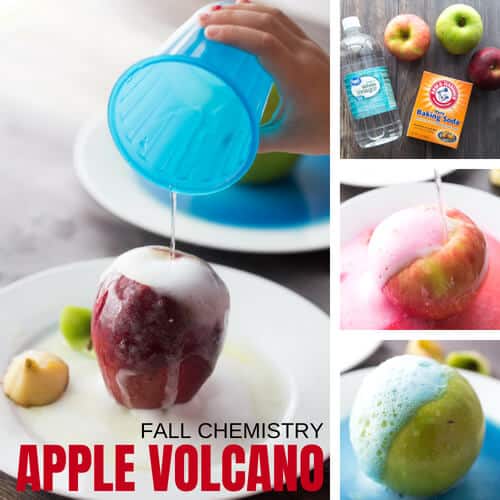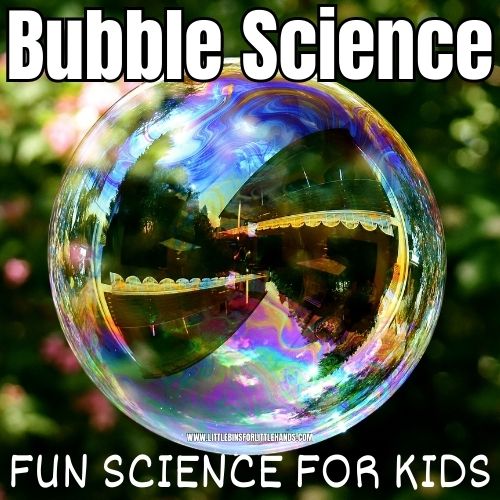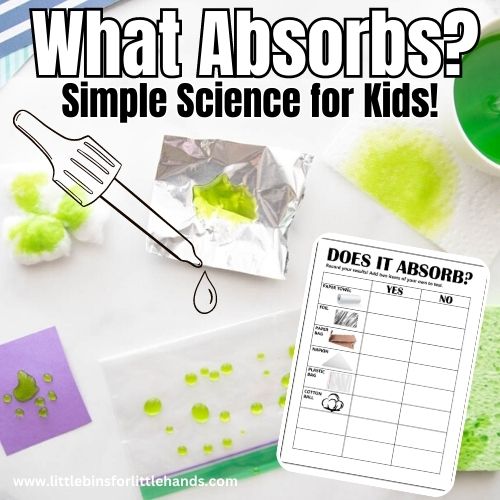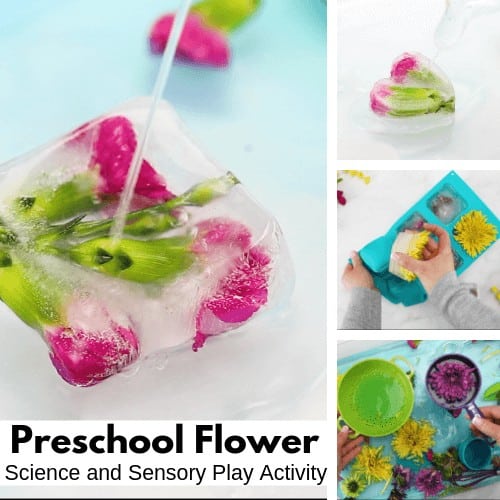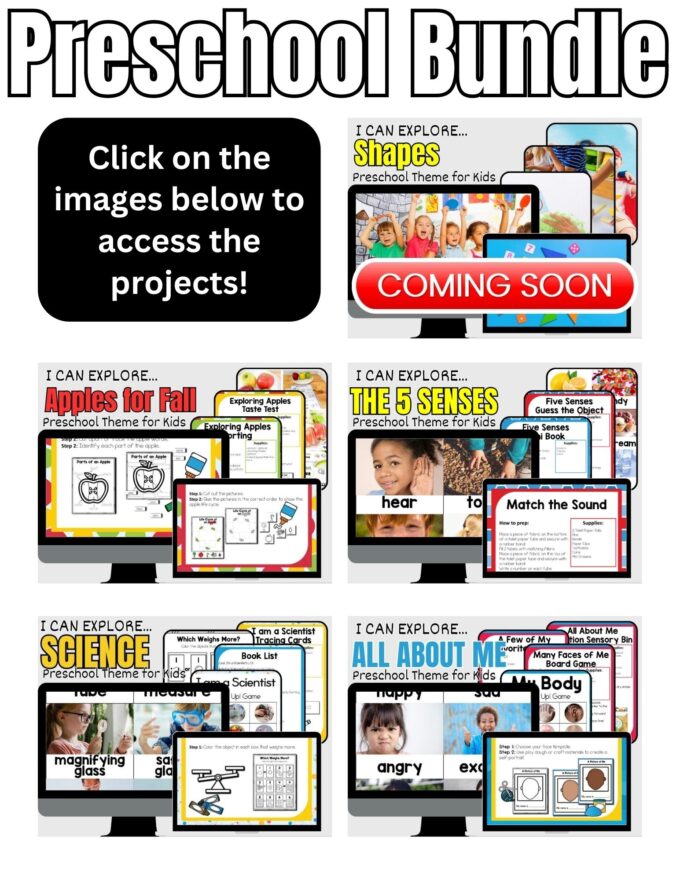What are the best sensory science activities for toddlers and preschoolers? We know young children prefer to learn through hands on play and exploration. Read more about how to combine the senses and science, along with helpful tips. You’ll also find our top sensory science activities that combine science, sensory play, and fun! Here you will find easy ways to teach your 3 to 5 year olds science!
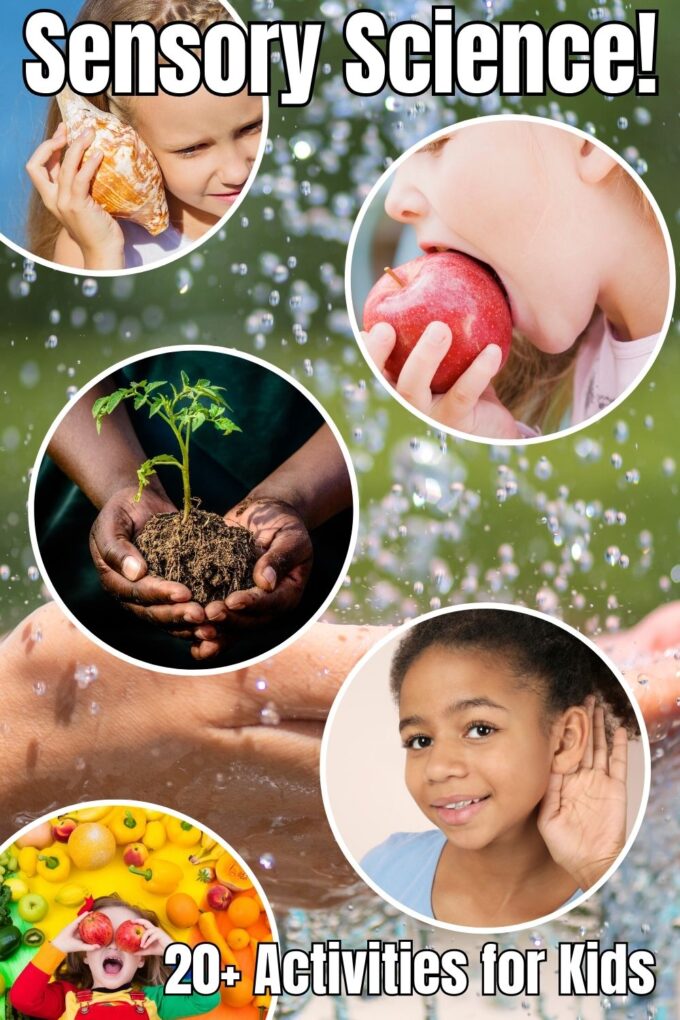
How To Teach Science To 3 to 5 Year Olds
Many of these fun science activities below will seem more like play than learning. Truly, the best way to teach your toddlers and preschoolers science is through play!
Encourage kids to use their senses whenever possible! Make observations with the 5 senses, including sight, sound, touch, smell, and taste.
Have lots of conversations with your child and ask questions throughout the process. Acknowledge what they have to say about the activity and try not to overcomplicate the discussion.
Ask open-ended questions without telling them what you want them to say. However, you can start off the discussion with a What do you think if… type of question.
- What does it feel like? (Help name some different textures)
- What do you see happening? (Colors, bubbles, swirls, etc.)
- Do you think it will…?
- What would happen if…?
This is an excellent introduction to observations in science and using the scientific method for kids!
What is Sensory Science?
Such a fun concept… It is science and sensory play mixed together for young children still exploring the world around them and learning simple science concepts.
When we think of sensory, we think of the five senses, sight, hearing, taste, touch, and smell! These senses play an important role in learning and understanding the world around them. Incorporating the senses into science activities for kids aged 3-5 can enhance their curiosity and engagement, making learning more meaningful and enjoyable.
Here’s how you can integrate each of the 5 senses into simple science projects.
Sight:
- Observation Activities: Encourage children to observe and describe the appearance of various objects, plants, or animals. Use picture cards, flashcards, or real-life examples to explore shapes, colors, and sizes.
- Nature Walks: Take children on nature walks to observe the sights of the outdoors, such as different plants, animals, and landscapes. Try one of our scavenger hunts!

Hearing:
- Sound Exploration: Provide musical instruments or sound-making objects and ask children to differentiate between various sounds or identify specific sounds in their environment. Make a water xylophone!
- Listening to Nature: Go outside and listen to birds chirping, leaves rustling, or other natural sounds.
Taste:
- Simple Taste Tests: Conduct taste tests using safe and familiar foods to explore sweet, sour, salty, and bitter tastes. Try this apple taste test!
- Edible Science: Incorporate food-based science experiments, like making rock-layer snack bars, bread in a bag, or homemade butter!
Touch:
- Sensory Bins: Create sensory bins filled with materials of different textures, such as rice, sand, cotton balls, or water beads, for children to explore through touch.
- Tactile Experiments: Use hands-on experiments like mixing different ingredients to make playdough or slime, allowing children to experience different textures.
Smell:
- Scent Exploration: Introduce children to various scents, like flowers, fruits, or herbs. Blindfold them and ask them to identify different scents.
- Scented Sensory Activities: Add scents to sensory materials, such as lemon scented rice, Kool Aid playdough, or spice paint, to engage their sense of smell during play.
Tips for Incorporating Senses into Simple Science Projects:
Multisensory Approach: Whenever possible, combine multiple senses in an activity to enrich the experience and reinforce learning.
Hands-On Activities: Provide hands-on experiences that allow children to manipulate materials and interact with their environment!
Explore Nature: Use outdoor environments to encourage the exploration of various sights, sounds, textures, and smells found in nature.
Ask Questions: Encourage kids to ask questions and discuss their observations during the science activities. This promotes critical thinking and curiosity.
How Do You Combine Science and Sensory Play?
Combining sensory and science elements in activities for preschool-age kids creates an overall learning experience that encourages their natural curiosity. Through hands-on activities, kids can interact with their environment using their different senses, while also exploring basic science concepts.
For instance, a “Rainbow Volcano” experiment seamlessly integrates sight, touch, smell, and sound. By mixing baking soda and vinegar, children witness a colorful eruption, engaging their sense of sight and the tactile sensation of the fizzing reaction. If kids listen carefully they can hear the fizz and smell the vinegar. It is also an excellent example of cause and effect and a fun introduction to the wonder of chemistry. Want to add taste? Try our fizzy lemonade!
Helpful Sensory Science Resources To Get Your Started
Here are a few resources to help you introduce science more effectively to your kiddos or students and feel confident when presenting materials. You’ll find helpful free printables throughout.
- Best Science Practices (as it relates to the scientific method)
- 8 Science Books for Kids
- Science Supplies List
- Science Tools for Kids
- Science Activities For Toddlers
- Preschool Science Activities
- Sensory Play Ideas
Top Science Sensory Activities
Check out these fantastic science and sensory play ideas below that are so easy to set up! Each one incorporates at least two senses!
Fluffy Slime
Kids love fluffy slime because it’s SO fun to squish and stretch but also light and airy as a cloud! Learn how to make fluffy slime so quickly you won’t believe it with our easy fluffy slime recipe. Also, learn about the science behind this fun activity.
Want to make more slime? Check out tons more slime recipes here!
Edible Slime
Perfect for young kids, especially toddlers, who like to taste stuff but still want to enjoy the slimy experience. Making and playing with slime is an amazing tactile sensory experience (cool science too) whether you make it with borax or marshmallows.
Baking Soda Volcano
Share a simple chemical reaction the kiddos will love to try over and over again. This erupting science experiment uses baking soda and vinegar for an easy science activity for preschoolers. We have a number of fun themes for you to try.
Melting Crayons
Let’s show the kiddos how to make these fantastic DIY crayons from old crayons instead of throwing away all those bits and pieces. Plus, making crayons from old crayons is a simple science activity illustrating physical change.
Frozen Dinosaur Eggs
Ice melting is so much for kids and these frozen dinosaur eggs are perfect for your dinosaur fan and easy sensory science! Ice melting activities make awesome simple sensory science activities. Check out more Dinosaur Activities.
Oobleck
Get ready to experience this amazing sensory science activity with our 2 ingredient oobleck recipe. Is oobleck a liquid or a solid? Make some and find out for yourself!
5 Senses Activities
Using our 5 senses is a great introduction to observing in science! Set up a wonderful and simple discovery table for early childhood learning and play. These 5 senses activities are delightful for introducing young kids to the simple practice of observing the world around them. They will discover their 5 senses and learn how their bodies work.
Chick Pea Foam
Have fun with this taste safe sensory play foam made with ingredients you probably already have in the kitchen! This edible shaving foam or aquafaba as it is commonly known is made from the water chick peas are cooked in.
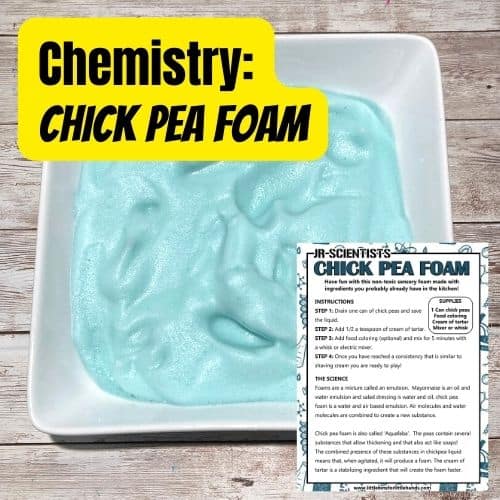
Ivory Soap Experiment
Sensory science is an appealing form of play and learning for my son. We have done many hands-on sensory science activities that spark curiosity and develop a love of learning! In this activity you will explore what happens to ivory soap when you heat it in the microwave.
Bubble Science
What is it about blowing bubbles? It’s all about surface tension and cohesion. Mix up your own inexpensive bubble recipe and get blowing. Can you make a bouncing bubble without it breaking? What about bubbles with different shapes? Or even blow a huge bubble snake!
What Absorbs Water
Water activities are so easy to set up and perfect for young kids to play and learn with science. Everyday materials and supplies become awesome science experiments. Explore absorption as you investigate what materials absorb water with this fun experiment.
Flower Science
Ice melt, sensory play, parts of a flower, and fun all in one easy to set-up sensory science activity!
Nature Paintbrushes
Collect interesting branches, leaves, and clippings from outside and turn them into nature’s paintbrushes! Or paint with pinecones!
Engage the sense of smell with homemade spice paint!
Printable Playdough Mats
Choose one of our easy playdough recipes, (this one is our favorite) and a printable playdough mat for fun sensory science. Plus, it’s a great opportunity to practice fine motor skills, color and shape recognition, and counting while learning.
Add any of these free playdough mats below to your early-learning science activities!
- Rainbow Playdough Mat
- Recycling Playdough Mat
- Skeleton Playdough Mat
- Weather Playdough Mat
- Pond Playdough Mat
- What a Plant Needs Playdough Mats
- In the Garden Playdough Mat
- Grow Flowers Playdough Mat
- Insect Playdough Mats
Shadow Science Play
Explore light and movement fun shadow activities!
Water Xylophone
Make sound with a homemade water xylophone and introduce physics through play.

Printable 5 Senses Project Pack
Get ready to explore this year with our growing Preschool STEM Bundle.
What’s Included:
There are 4 fun preschool themes to get you started. This is an ” I can explore” series!
- My 5 Senses
- All About Me
- Science and Scientist
- Apples
Each unit contains approximately 15 activities, with instructions and templates as needed. Hands-on activities are provided to keep it fun and exciting. This includes sensory bins, experiments, games, and more! Easy supplies keep it low cost and book suggestions add the learning time.


